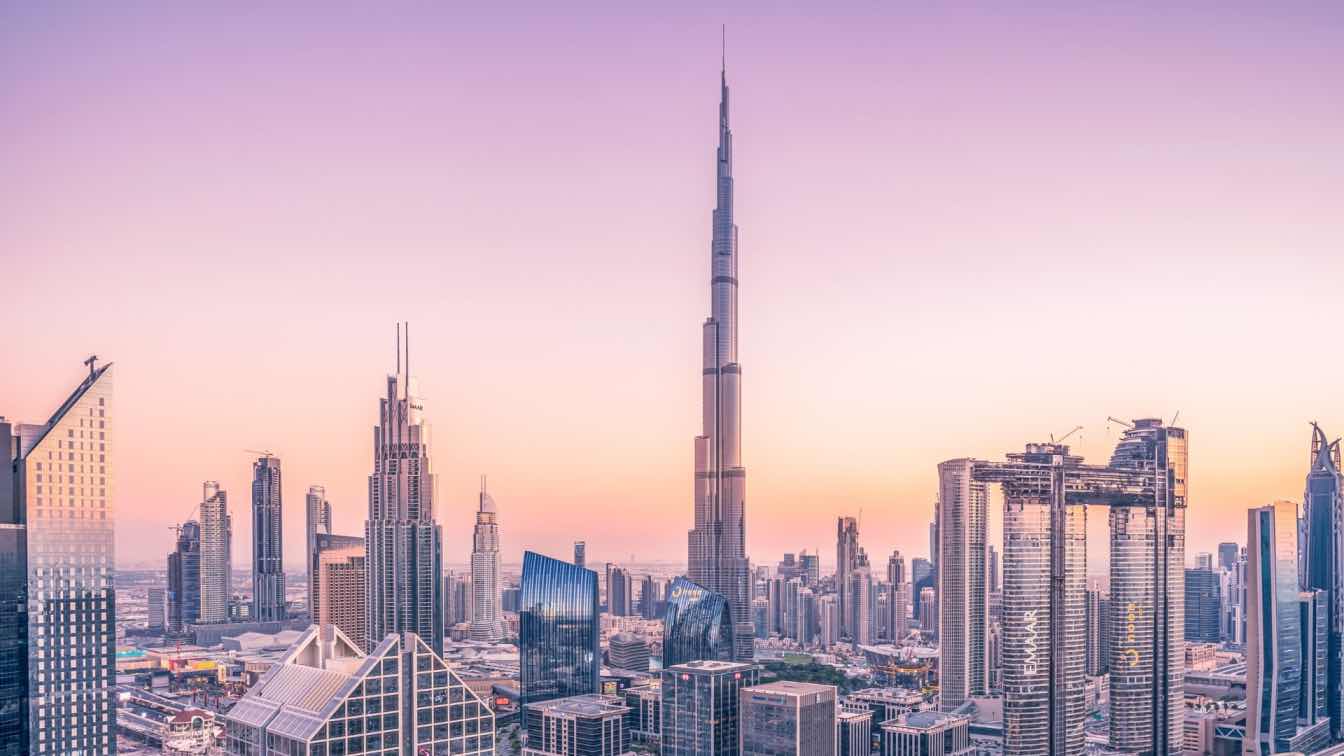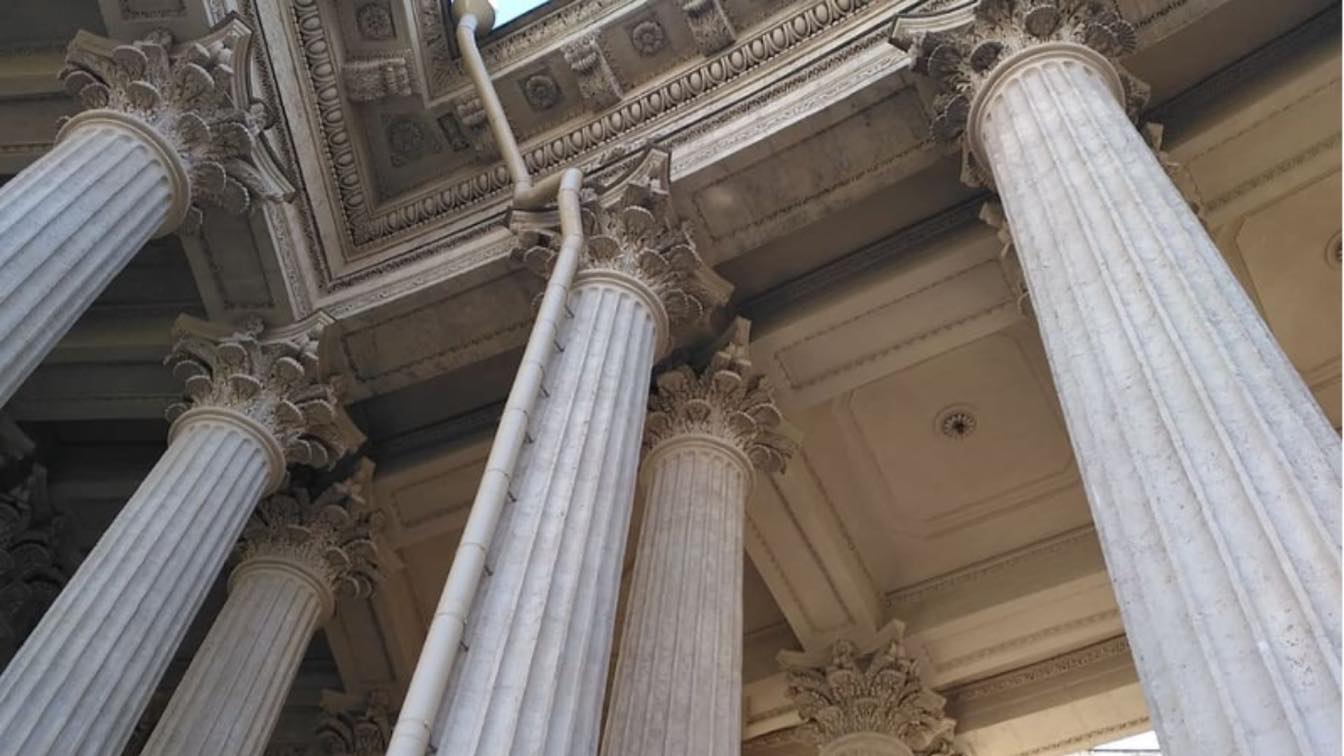Gone are the days when the world only had seven man-made wonders. Today, architects and engineers worldwide are engaged in a constant race to erect the tallest or most dumbfoundingly impressive building in the world. On that note, let’s look at the current holder of this title – the Burj Khalifa.
Burj Khalifa – The Raw Stats and Facts
Height: 2,716.5 feet or 828 meters (830 to tip), excluding the antenna but including the spire
Stories: 163
Records held:
- World’s tallest free-standing structure
- World’s highest number of stories
- World’s highest occupied floor
- Elevator with the longest travel distance in the world
Construction time: Five years, from 2004 to 2009
Previous record-holder: The Taipei 101, which is 1,667 feet tall (508.2 meters)
Location: Dubai, United Arab Emirates
Cost to complete: $1.5 billion
Owner: Emaar Properties
Architect: Adrian Smith
The Idea Behind the Tower
The numbers and records of the Burj Khalifa are definitely impressive, but what is the concept behind this gargantuan building? Why bother building something so needlessly tall in a desert anyway? On the one hand, creating seemingly impossible architectural marvels is one of the spices of life for an architect, the same way owning such a marvel is an incredible treasure for a real estate developer.
Beyond that, however, architectural wonders are also art pieces and can be incredibly symbolic. That’s certainly the case with the Burj Khalifa, as the tower’s design is inspired by the hymenocallis (i.e., the Spider Lily flower cultivated in Dubai and the Gulf Cooperation Council). As for the tower’s name, it literally translates to “Khalifa Tower” and is named after Sheikh Khalifa ibn Zayed Al Nahyan, the leader of the neighboring emirate of Abu Dhabi.
The broader cultural and political impacts of the tower are also incredibly significant, as it has helped open up Dubai to the rest of the world. That is the case for the whole of the Dubai project, of course, but the Burj Khalifa is undoubtedly a standout even among all the other architectural wonders of the desert city.
An Engineering Marvel
All those concepts and ideas sound great, but how did Adrian Smith and the other genius architects and engineers working on the tower manage to bring it to life? Much of it came down to meticulous calculations and quadruple-checking every single figure before doing anything else.
The sheer number of calculations that went into making sure everything was perfect dwarfs almost every other mathematical endeavor in the world, be it other architectural projects or complex software enterprises. It is like comparing Windows to a simple timer app, a Lamborghini to a bicycle, or an online slot like Sweet Bonanza to bingo.
However, erecting such a stunning building required much more than just careful calculations and quality construction. Adrian Smith and structural engineer Bill Baker had to come up with several unique architectural decisions, including:
- The raft of the Burj Khalifa’s foundation is 3.7 meters (12.1 feet) thick and made of steel rebars and 12,500 cubic meters of concrete.
- The foundation beneath the raft is ten stories deep and is made out of 194 RCC piles that penetrate the soft soil under the Burj Khalifa and help the tower avoid uneven soil settlement.
- Electricity is constantly running through the tower’s foundation to achieve electrolysis. This is done to prevent corrosion in the foundation’s rebars from the salty water in the soil coming from the Persian Sea.
- The tower itself is made with the bundled tube design first invented by the Bangladeshi-American structural engineer Fazlur Rahman Khan for the Willis Tower in Chicago, USA. This allows the Burj Khalifa to withstand the fierce winds of the UAE coast with only 6 feet (around 2 meters) of sway at the top of the tower.
What is the Future of the Burj Khalifa?
As we well know, no building lasts forever without regular maintenance and frequent renovations. However, how does one renovate a building that’s half a mile tall? The answer right now is – nobody knows. The tower’s architects have stated that its expected lifetime as an operational (i.e., safe) building will be 100 years. The structure itself can last much more than that, of course, but it’s unlikely to be safe for people after that point.
When this happens, the tower will either have to be renovated or demolished. Both are expected to be quite tricky. The main part of the tower that would need renovation is its foundation, after all, and the building itself weighs over 500,000 tons.
Demolishing the tower would also be difficult since either imploding such a tall building or knocking down its floors from the ground up would be complicated, to say the least. A manual top-down deconstruction seems likely but will also be challenging. The tallest skyscraper to date that’s been voluntarily demolished is the AXA Tower in Singapore. The dismantling was done via manual deconstruction, as it was deemed too big for demolition. For reference, the AXA Tower was a “mere” 771 feet tall (235 meters) – almost a quarter of the size of the Burj Khalifa.
Hopefully, there is still plenty of time before engineers will need to tackle this issue. In the meantime, the Burj Khalifa is unlikely to remain the world’s tallest building regardless. Several projects for taller buildings are already in the works in countries such as Japan, South Korea, India, and Saudi Arabia.
As of writing this, the most likely successor of the Burj Khalifa is the Jeddah Tower in Jeddah, Saudi Arabia. The project has been in the works since 2013 but was halted for five years between 2018 and 2023. It was recently resumed, however, and the Jeddah Tower is expected to be the first building taller than 1 kilometer (or 3,307 feet, to be exact). Interestingly enough, the Jeddah Tower was also the brainchild of Adrian Smith – the same architect responsible for the Burj Khalifa.
Whenever the Burj Khalifa’s record is broken, tourism and commercial interest are bound to decrease. However, that doesn’t mean the tower will stop being profitable, nor does it make its design and construction any less groundbreaking.





